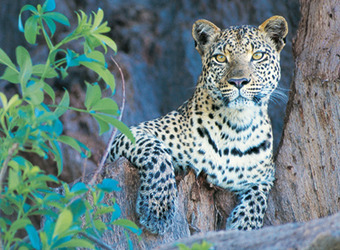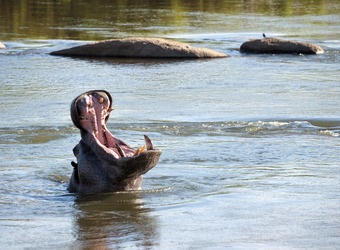Sabi Sand Reserve
Click here to be the first to review Sabi Sand Reserve
Start Planning Your Custom Safari view larger image
view larger image
Sabi Sand is one of the world’s most extraordinary wildlife locales. This private 150,000-acre reserve shares a border with Kruger National Park and is named for the two rivers that flow through it. Renowned for its excellent “Big Five” viewing—the elephant, rhino, Cape buffalo, lion and abundant leopard, which were once favorite hunting targets—Sabi Sand has led the way in bringing them back.
 view image gallery
view image gallery
The Safari Experience
As a collection of private reserves that have only ever been wildlife areas, the Sabi Sand region offers a very exclusive experience within the Greater Kruger Park area. Each of the private game reserves within the Sabi Sand offer day and night wildlife drives by open 4x4 vehicles, guided nature walks, off-road driving and sometimes options like fly-camping sleep-outs and “hides,” allowing guests to get very close to resident wildlife. The photographic opportunities in this less-populated area are plentiful. Animal viewing is well managed so that only two to three vehicles can be present at any given wildlife sighting. Because there are no restrictions on the times that one can drive, early morning and dusk light can be captured in stunning images, and visitors can enjoy a classic sundowner cocktail just as the sun hits the horizon.
 view image gallery
view image gallery
Wildlife
Sabi Sand shares a long, unfenced border with Kruger National Park, and animals often come to the Sand River to drink as they move freely throughout the park and adjacent reserves. On the southern border of the reserve is the Sabie River, one of South Africa’s most biologically diverse riverine sectors. This region is particularly excellent for two of Africa’s more elusive creatures: leopard and both black and white rhino. Leopard are often found perched in trees among the riparian flora. The Greater Kruger Park area is also known for its dense elephant population. Safari-goers may see them along the rivers bathing and drinking, or at one of the many water holes within view of camp. The wildlife here is incredibly relaxed and easy to find because of the very low human impact on the area over many years. Of course, you will also see lion, giraffe, zebra, impala, hyena, the occasional wild dog, and many of the more than 400 different bird species.
 view image gallery
view image gallery
How to Include the Sabi Sand in Your Safari Itinerary
Recommended Number of Nights
Nature Travelers: 3 nights, combined with 3 nights in the Kruger / Mashatu region
Photographers: 3-4 nights, combined with 4 nights in the Southern Kalahari
Families: 3-4 nights
Active Travelers: 3 nights, combined with Cape Town’s active experiences
Other Regions to Include
The Sabi Sand is relatively flat and a combination of riverine thicket and open savanna. In terms of access and ecosystem, Kruger National Park or Mashatu are great accompaniments to the Sabi Sand. Mashatu, located in southern Botswana near the South Africa border, and the north and eastern sections of Kruger National Park feature more rocky landscapes. From the Sabi Sand, access to the Southern Kalahari and Tswalu, with their rust-colored semi-desert landscape and varied wildlife, is easy. Zululand offers a contrasting experience, with a number of different biomes as well as coastal activities such as diving, snorkeling and observing nesting sea turtles. Cape Town is always a recommended extension, offering something for everyone including nature photography in the Cape Point Nature Reserve, cheetah interaction, whale watching, shark safaris, historic and cultural tours, fine dining, cycling, sea kayaking to see penguins, and hiking Table Mountain.
